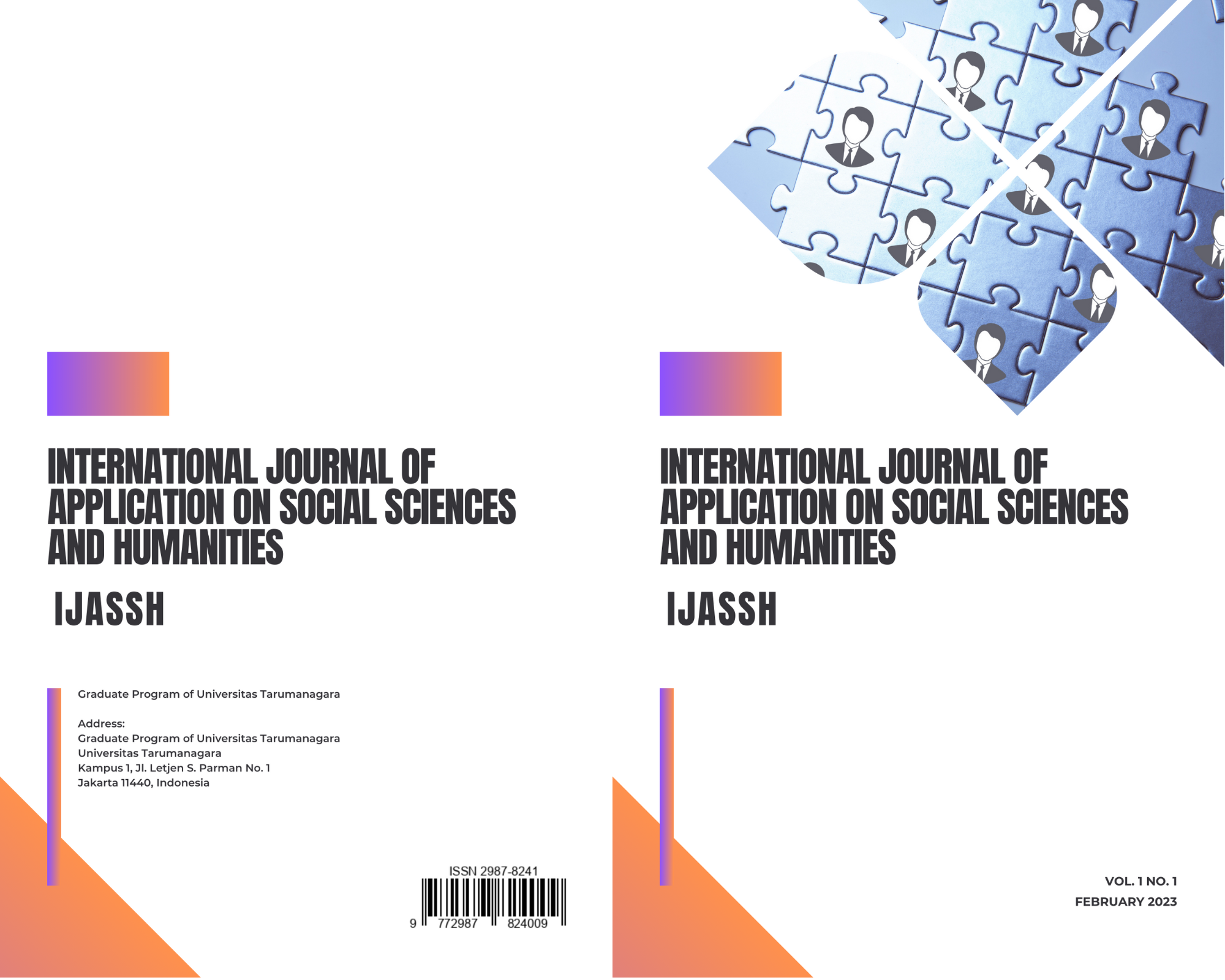THE EFFECT OF ART THERAPY MANDALA TO REDUCE SYMPTOMS OF DEPRESSION IN ADOLESCENTS WITH INSOMNIA
Main Article Content
Abstract
Art therapy mandala has been widely used to treat anxiety and depression. Depression is a mood disturbance accompanied by prolonged feelings of sadness, helpless, worthlessness, loss of appetite, and experiencing sleep disturbances in the form of lack of sleep as known as insomnia. Insomnia refers to the inability to initiate sleep, maintain sleep, and/ or wake up to early. In the long term, insomnia can lead to daytime fatigue, decreased productivity and impaired social relationships. This study aims to determine the effect of art therapy mandala on one of the symptoms of depression which insomnia. Art therapy mandala is an activity of drawing in a circle pattern. The method was used in this study is one group pre-test post-test. Beck Depression Inventory (BDI)-II was used to classify depressive participants on mild, moderate, or severe groups. Insomnia Severity Index (ISI) was used to compare the score prior and after intervention. There were 18 participants with age range 18 to 21 joined the intervention in three sessions, each sessions lasted 60 minutes. The results showed that after participating in the art therapy mandala program for three sessions, the score of insomnia was decreased significantly. Implication of this research is that drawing mandala is easy, fun and practically for daily activity to reduce insomnia.
Article Details

This work is licensed under a Creative Commons Attribution-NonCommercial-ShareAlike 4.0 International License.
References
C.A. Malchiodi, Handbook of art therapy, in: The Guildford Press, 2012.
A. Abbing, et al., The effectiveness of art therapy for anxiety in adults: A systematic review of randomized and non-randomized controlled trials, in Plos One, vol. 13(2), 2018, pp.1-19.
A. Babouchkina, S.J. Robbins, Reducing negative mood through mandala creation: A randomized controlled trial, in Journal of American Art Therapy Association, vol. 32(1), 2015, pp. 34-39.
A.K. Permatasari, S. Marat, M.Y. Suparman, Penerapan art therapy untuk menurunkan depresi pada lansia di panti werdha x, in: Jurnal Muara Ilmu Sosial, Humaniora, dan Seni, vol. 1(1), 2017, pp. 116-126.
A.T. Beck, C.H. Ward, M. Mendelson, J. Mock, J. Erbaugh, An inventory of measuring depression, in Archives of General Psychiatry, vol. 4, 1961, pp. 561-571.
American Psychiatric Association, Diagnostic and statistical manual of mental disorders (5th ed.)., in Author, 2013.
Asmika, Harijanto, N. Handayani, The prevalence of depression and description of psychosocial stressors in adolescents of senior high school in Malang district, in Jurnal Kedokteran Brawijaya, vol. 24(1), 2008, pp. 15-21.
C. Gagnon, L. Belanger, H. Ivers, C.M. Morin, Validation of the insomnia severity index in primary care, in The Journal of the American Board of Family Medicine, vol. 26, 2013, pp.701-710.
D. Elkis-Abuhoff, et al., Mandala drawings as an assessment to tool for women with breast cancer, in The Arts in Psychotherapy, vol. 36, 2009, pp. 231-238.
D.E. Papalia, G. Martorell, Experience human development (13th ed.)., in McGraw Hill, 2013.
Desi, A. Felita, A. Kinasih, Gejala depresi pada remaja di sekolah menengah atas, in Jurnal Ilmiah Ilmu Kedokteran, vol. 8(1), 2020, pp. 116-133.
E. Mujahidah, R.A. Listiyandini, Pengaruh resiliensi dan empati terhadap gejala depresi pada remaja, in Jurnal Psikologi, vol. 14(1), 2018, pp. 1-16.
E.B. Hurlock, Psikologi perkembangan: Suatu pendekatan sepanjang rentang kehidupan, in Erlangga, 2003.
J. W. Santrock, Life-span development: Perkembangan masa hidup (edisi ke-13), in Erlangga, 2011.
J.W. Santrock, Psikologi pendidikan, in Kencana, 2008.
K.T. Hoo, E.O.I Li, Mandala art therapy: Intervention for individual with autism spectrum disorder (ASD), in Jurnal Psikologi Malaysia, vol. 32(1), 2018, pp. 97-113.
L. Culpepper, P. Doghramji, S. Kornstein, T. Roth, The art of sleep: Recognizing and treating insomnia in primary case practice, in Journal of Family Practice, 2008, pp. 1-13.
L. Epstein, S.M. Hasaan, Why your sleep and wake cycle affects your mood, in Harvard Health Publishing, 2020.
L. Ross, et al., Insomnia and its association with quality of life in women with ovarian cancer, in Gynecologic Oncology, 2020, pp. 1-9.
L. Zhang, J. Lu, B. Li, X. Wang, C. Shangguan, Gender differences in the mediating effects of emotion-regulation strategies: Forgiveness and depression among adolescents, in Personality and Individual Differences, vol. 163, 2020, pp. 1-6.
M. Nguyen, Art therapy: A review of methodology, in Dubna Psychological Journal, vol. 4, 2015, pp. 29-43.
M.H. Slegelis, Jung’s mandala and its relationship to art psychotherapy, in The Arts in Psychoterapy, vol. 14, 1987, pp. 301-311.
M.J. Murphy, M.J. Peterson, Sleep disturbance in depression, in Sleep Med Clinics, 2015, pp. 1-7.
M.J. Thorpy, Classification of sleep disorders, in Neurotherapeutics, vol. 9(4), 2012, pp. 687-701. DOI: 10.1007/s13311-012-0145-6
N. Darmayanti, Meta-analisis: Gender dan depresi pada remaja, in Jurnal Psikologi, vol. 35(2), 2008, pp. 164-180.
N.A. Curry, T. Kasser, Can coloring mandala reduce anxiety?, in Art Therapy: Journal of American Art Therapy Association, vol. 22, 2005, pp. 81-85.
P. Henderson, D. Rosen, N. Mascaro, Empirical study on the healing nature of mandala, in Psychology of Aesthetics, Creativity, and The Arts, vol. 1(3), 2007, pp. 148-154.
S. Reni, 90 persen kasus bunuh diri akibat depresi, in Kompas.com, 2019.
S. Reynolds, et al., Do sleep disturbance in depressed adolescents improve following psychological treatment for depression?, in Journal of Affection Disorder, 2019, pp. 1-30.
S.N. Adriani, M.P. Satiadarma, Efektivitas art therapy dalam mengurangi kecemasan pada remaja pasien leukimia, in Indonesian Journal of Cancer, vol. 5(1), 2011, pp. 31-47.
S.W. Sarwono, Psikologi remaja, in Rajawali Pers, 2006.
W. Street, D. Weed, A. Spurlock, Use of music in the treatment of insomnia: A pilot study, in: Holistic Nursing Practice, vol. 28, 2014, pp. 38-42.



